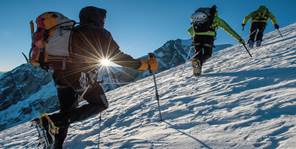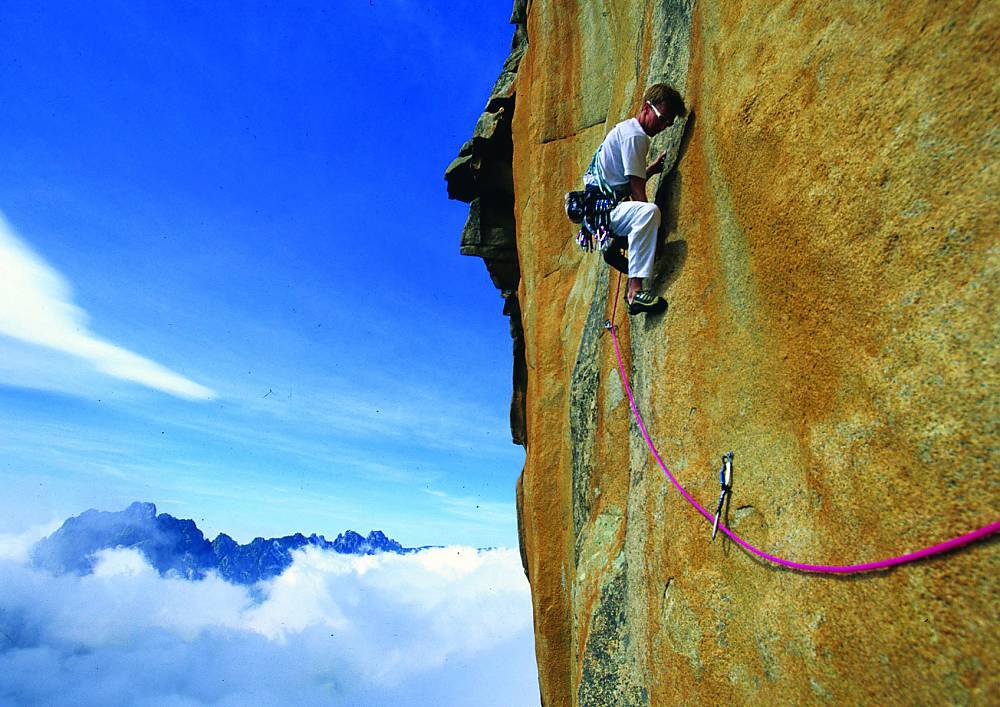Inscribed in 2019 (14.COM) on the Representative List of the Intangible Cultural Heritage of Humanity
1.1 Description of the element
Alpinism is the art of climbing up summits and walls in high mountains, in all seasons, in rocky or icy terrain. It involves physical, technical and intellectual abilities, using appropriate techniques, equipment and highly specific tools such as axes and crampons. Alpinism is a traditional, physical practice characterized by a shared culture made up of knowledge of the high-mountain environment, the history of the practice and associated values, and specific skills. Knowledge about the natural environment, changing weather conditions, and natural hazards is also essential. Alpinism is also based on aesthetic aspects: alpinists strive for elegant climbing motions, contemplation of the landscape, and harmony with the natural environment. The practice mobilizes ethical principles based on each individual’s commitment, such as leaving no lasting traces behind, and assuming the duty to provide assistance among practitioners. Another essential part of the alpinist mindset is the sense of team spirit, as represented by the rope connecting the alpinists. Most community members belong to alpine clubs, which spread alpine practices worldwide. The clubs organize group outings, disseminate practical information and contribute to various publications, acting as a driving force for alpinist culture. Since the 20th century, alpine clubs in all three countries have cultivated relationships through frequent bilateral or trilateral meetings at various levels.
1.2 Geographical location and Range of the element:
France, Italy and Switzerland
Alpinism emerged in 1760 in the Mont Blanc massif, which was at the time territory of the Kingdom of Sardinia and, since 1860, has been a massif along the border between the three submitting countries. The Mont Blanc massif is part of the Alpine arc, a mountain range that stretches from Slovenia and Austria to the Maritime Alps. The portion of the Alps covered by the three countries consists of the massifs of Mont Blanc, Monte Rosa and the Matterhorn (Italian-Swiss), the Dolomites and Gran Sasso (Italy), the Vanoise–Gran Paradiso and the Mercantour–Maritime Alps (French-Italian), the Oberland and the Engadine (Switzerland), and the Écrins (France), which are the main places of practice. The 82 highest peaks in Europe – with an elevation of more than 4,000 metres – are located there. Other massifs, such as in France (the Pyrenees) and in Italy (the Apennines), also draw alpinists.
Alpinism is also practised in other parts of the Alps (Austria, Slovenia) and in other European mountain ranges (Polish-Slovakian Tatras, Scotland, Norway) as well as in areas outside of Europe (the Atlas, the Caucasus, the Pamir, the Altai, the Himalayas, the Andes, Patagonia, the Rockies, Alaska, the Japanese Alps and the Southern Alps in New Zealand).
1.3 Domain(s) of the element:
Domain(s) of the element as intangible cultural heritage identified according to the Article 2.2 of the Convention:
- oral traditions and expressions, including language as a vehicle of the intangible cultural heritage
- performing arts
- social practices, rituals and festive events
- knowledge and practices concerning nature and the universe
- traditional craftsmanship
- other(s)
Evaluation Body Decision
Inscription: 14.COM 10.b.12




